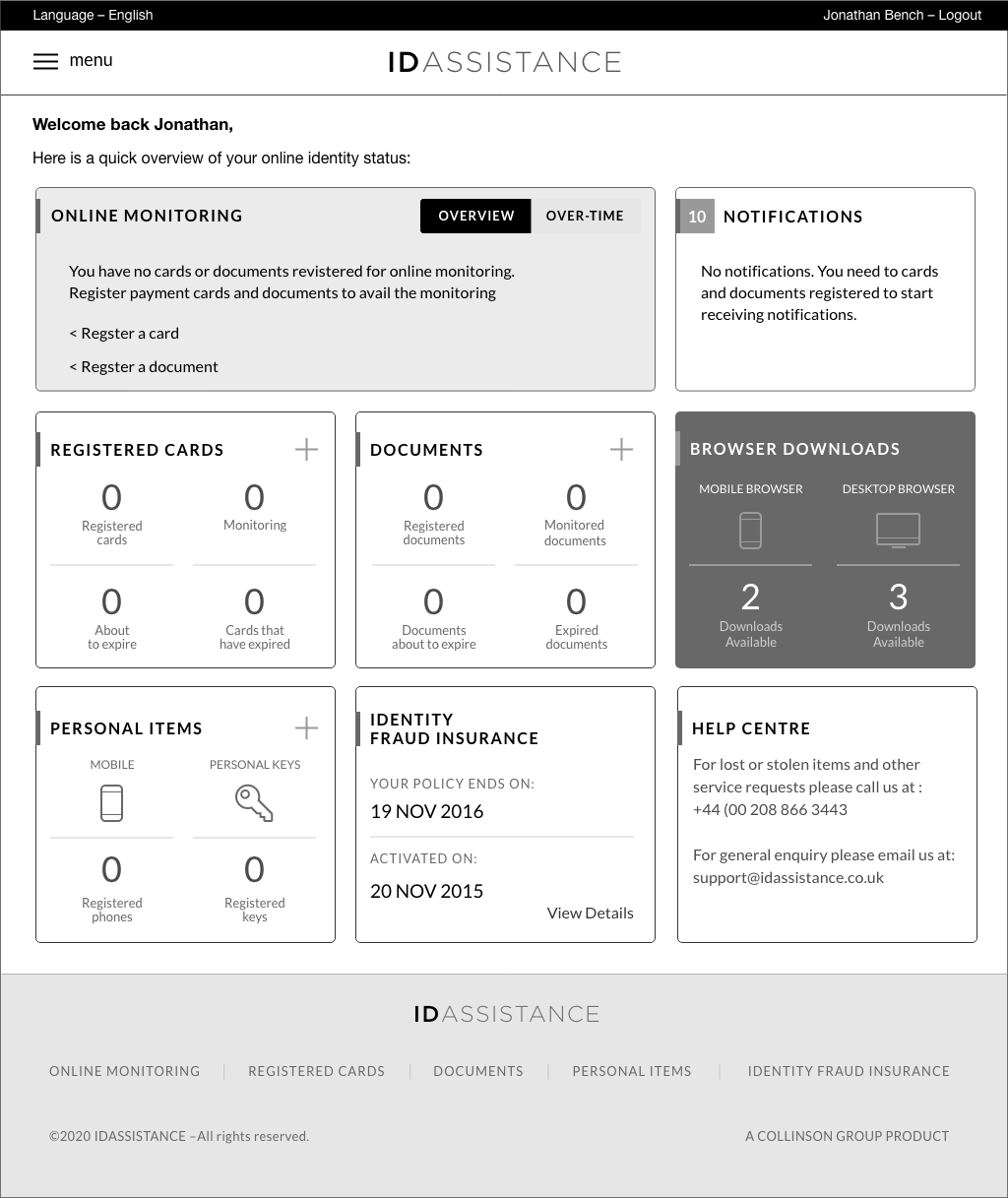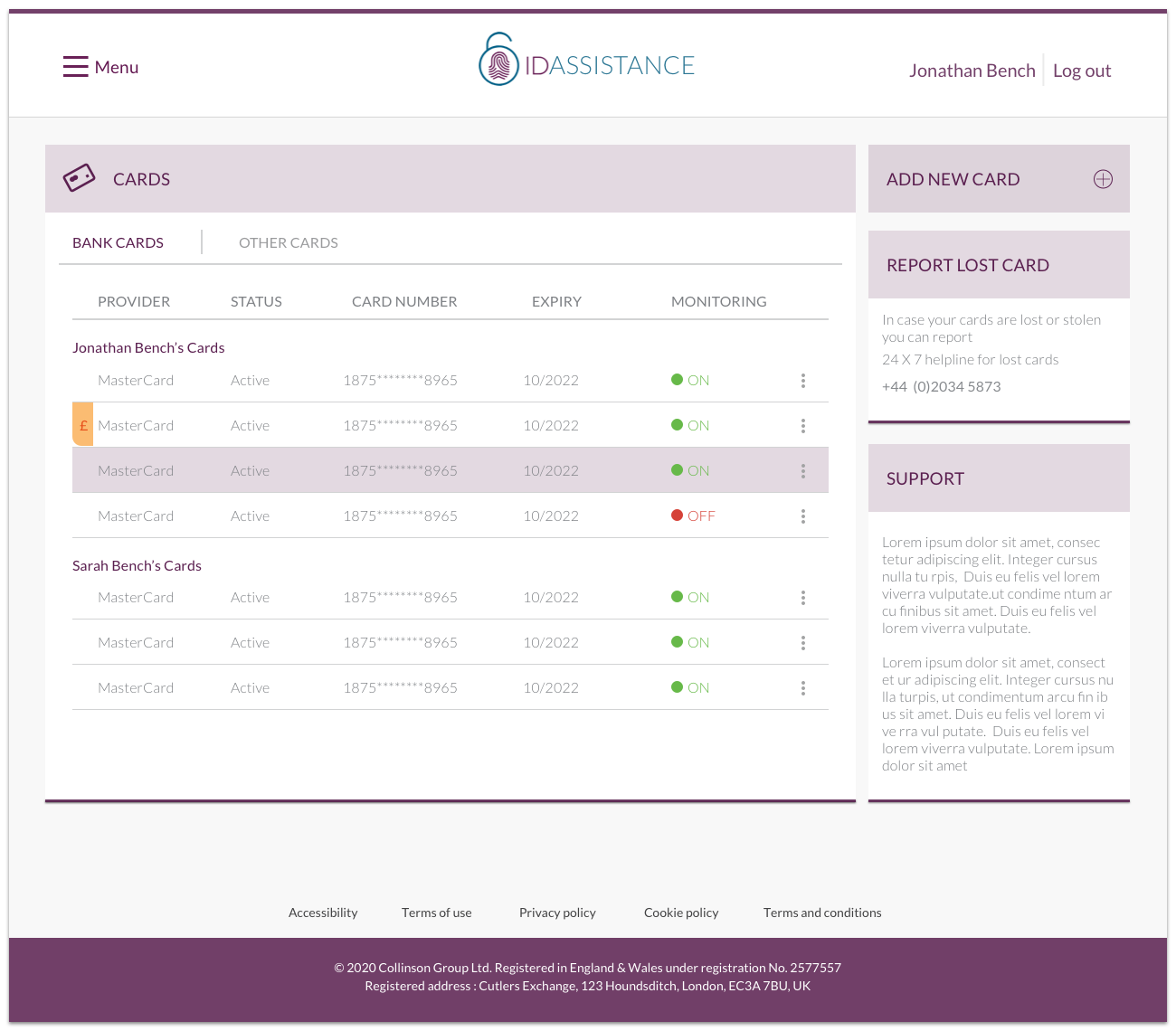ID ASSISTANCE
ID Assistance is a B2B product for managing and mitigating the risk of online identity theft helping users keep their personal and financial details safe at all times, anywhere in the world. It also provides lost card assistance, digital document storage facility and protection of personal devices.
THE CHALLENGEDefining the product offerings
The objective was to build a customisable frame work of BtoB services in which clients could select the services they would like to offer to their customers.
Product offering grid to define the range of the products and services for each product
Design Goals
Understand user needs and find reasonable solutions
Optimise steps needed for key user tasks
Create easy to use but appealing interfaces
Modular but consistent user experience
Scalable and customisable site structure and UI design
Build a Design system for the product
Style guide which can be easy to theme for client
THE APPROACHDESIGN STRATEGY
I worked in a multi-disciplinary team that included business owner, product managers, business analysts, software engineers, QAs, content and copy editors. Defining the design strategy, planning the design stages and aligning it with the product development cycle is important when working in sprints using agile methodology. I defined the key design deliverables, planned design workshops and facilitated user testing sessions.
My role
Senior product designer (IA & UX)
Softwares
Sketch with Abstract and Invision, Adobe XD - Photoshop, Pen & paper
DISCOVERYKnowing the user
Both qualitative and quantitive research was used to gain an in-depth understanding of user expectations.
An online survey was carried out on 1,045 participants in the UK to gather data on perception of identity theft and online data protection.
We asked participants about their awareness of online identity theft and the findings were :
60% participants felt they needed help and support
16% confident and actively managed their personal data
12% were unaware of risks of loosing personal data online
8% did not worry about identity theft
We asked participants who they trusted with their personal data and again the findings were very insightful
45% participants did not trust any organisation
27% trusted their banks and other financial institutions
16% felt safe with the government departments
12% trusted the health care services to keep their data safe
User persona & experience maps
Two key user groups were identified based on the qualitative research and I created detailed personas representing each group. The first group was older generation - not very conversant with online systems and mobile apps and unaware of the risks of identity theft. The second - younger and tech savvy group had higher awareness of online data protection and online frauds.
THE CONCEPTDefining the experience
I mapped out the onboarding journey with various entry points and different channels.
Rapid Sketching
Initial sketches of the registration journey screens (created in Adobe XD). These low fi wireframes were used to refine the journey as well as get user feedback.
Wireframes
The initial sketches were developed into high fidelity wireframes which were used to conduct user test to understand if users were able to understand the data presented to them on the dashboard.
DESIGNVisual design
Following the high fidelity wireframes and user testing, members of the design team created the visual designs for each page and I ensured key pages were user tested.
THE TAKEAWAYKey Outcomes
Designing the UX for a scalable and customisable product had its own challenges. I approached the design focusing on addressing the users’ needs and goals. Understanding user’s pain points, analysing the key tasks and optimising the journey was the focus of the design process. The interface was scalable and the white labeled product could be easily adapted for clients. The product was successfully deployed for several clients.


























